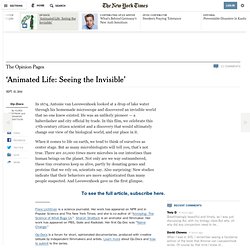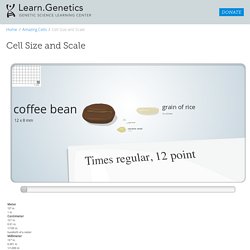

Mendelian Genetics, Probability, Pedigree, and Chi-Square Statistics. Exponential Outbreaks: The Mathematics of Epidemics. Note: We have published two additional lessons about the Ebola virus in West Africa and the United States.

Overview | What mathematical principles describe the spread of disease? How can we mathematically model an epidemic? In this lesson, students explore the fundamental mathematical concepts underlying the spread of contagious diseases. Using a simple exponential model, students compare and contrast the effects of different transmission rates on a population and develop an understanding of the nature and characteristics of exponential growth. Students can then compare their projections with actual Ebola data from West Africa, to create context for analyzing the strengths and limitations of this simplified model.
Materials | Computers with Internet access; graphing utilities Warm-Up: Have students get up to speed on the Ebola outbreak in West Africa by reading The New York Times’s Ebola Facts page. Unlike Ebola, the influenza virus is truly airborne. Animals in Education - National Anti-Vivisection Society. Welcome to NAVS’ Biology Education Advancement Program—BioLEAP.

BioLEAP is a comprehensive educational resource for students who do not wish to take part in classroom dissection exercises, and for teachers and school districts looking to introduce dissection alternatives into their curricula. These “alternatives” are really “advancements” in teaching tools that capitalize on 21st century technologies that can enhance a student’s understanding of anatomy, physiology and the life sciences in general. The following links will provide you with cost-effective and humane alternatives to animal use in the classroom, as well as provide you with information about student choice laws and policies that protect students’ rights to use dissection alternatives. Compound Interest. ‘Animated Life: Seeing the Invisible’ Continue reading the main story Video Op-Docs By FLORA LICHTMAN and SHARON SHATTUCK In 1674, Antonie van Leeuwenhoek looked at a drop of lake water through his homemade microscope and discovered an invisible world that no one knew existed.

Cell Signaling Technology. The Origin of Species. 100 Very Cool Facts About The Human Body – Global One TV: Multimedia for Mystics. The Brain The human brain is the most complex and least understood part of the human anatomy.

There may be a lot we don’t know, but here are a few interesting facts that we’ve got covered. Nerve impulses to and from the brain travel as fast as 170 miles per hour. Ever wonder how you can react so fast to things around you or why that stubbed toe hurts right away? Our Secret Universe. 20 Unbelievable TED Talks for Biology Majors. Poster: Genetic Mutations and Disease. The poster for the 2013 Holiday Lectures on Science, Medicine in the Genomic Era, illustrates the difference between germline and somatic cell mutations and why mutations that occur earlier in development are more likely to affect a greater portion of the body than those that occur later.

Genetic mutations are changes in a DNA sequence that can occur at any time in an individual’s life and in many different cell types. Mutations can lead to diseases such as autism, cystic fibrosis, or cancer. Biodiversity and Evolutionary Trees 3.2. BioEd Online: Biology Teacher Resources. ADW: Home. Cell Size and Scale. Some cells are visible to the unaided eye The smallest objects that the unaided human eye can see are about 0.1 mm long.

That means that under the right conditions, you might be able to see an ameoba proteus, a human egg, and a paramecium without using magnification. A magnifying glass can help you to see them more clearly, but they will still look tiny. Smaller cells are easily visible under a light microscope. Cell Membrane Bubble Lab - Clear Biology. Update 10/08/14 – I just published an update to this article.

Check out Cell Membrane Bubble Lab Revisited and download the lab worksheet. The amount of time I spend searching for classroom resources is substantial. I’ve been doing it a long time. So, when I come across good ideas I’ve never seen before, I get a little excited. These intermittent jackpots keep me going. Cell Membrane Soap Bubble Lab from Clear Biology on Vimeo. I like to rate instructional activities on three attributes: simplicity of design, instructional value, and engagement potential. Click on the image below to learn the procedure for setting up the Cell Membrane Bubble Lab. Life Science Workbook TE - CK-12 Wiki. Biology Workbook - CK-12 Wiki. Amino Acids, DNA, Energy Rich Molecules ... Biomedical Research & Science Education. 50 Years of Protein Structure Determination. Gender Testing of Female Athletes. Biology Homepage. The important thing is to not stop questioning. - Albert Einstein The Biology course is a requirement for graduation in Visalia Unified School District.

The course also fulfills University of California requirements for a laboratory science. At El Diamante, the majority of sophomores are enrolled in Biology as their science course. Though I am not teaching biology during the 2014 - 2015 school year, I am leaving my resources available to students and teachers who might find them useful. I may even find time to add a resource or two, since I thorougly enjoy biology and would like to continue to develop resources for the subject. Resources for Biology Biology resources include all of my PowerPoint presentations. CellCraft Biology Game. Cell Biology Animations. Biology Project - site map. The Human Protein Atlas. Science & Nature - Human Body and Mind. Biology in Motion.
The LUX operon controls light production.